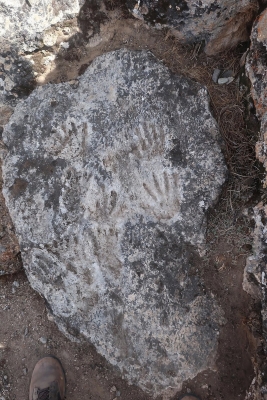
Between 1,69,000 and 2,26,000 years ago, two children in what is now Quesang, Tibet, left a set of handprints and footprints on a boulder. Seemingly placed intentionally, the now-fossilised impressions may be the world’s oldest known parietal or cave art a new study published online on September 10, 2021 in the journal Science Bulletin suggested.
Researchers used uranium, a naturally found radioactive element, to date the prints. They estimated that the impressions were left in the Pleistocene epoch – which occurred 2.6 million to 11,700 years ago. The marks were likely left by two children, one the size of a modern-day 12-year-old and the other the size of a 7-year-old.
Still, the team couldn’t tell what species of archaic humans actually left the prints. Study co-author Matthew Bennett told Live Science that “Denisovans are a real possibility,” but also mentioned that Homo erectus was also known to inhabit the region. He said “there are lots of contenders” but that they don’t know at this point.
As the researchers explain in an article, hand shapes can be commonly found in prehistoric caves. The hand is usually used as a stencil, spreading pigment around the edge. The oldest known examples are the caves in El Castillo, Spain, and Sulawesi, Indonesia. Now, whether this is art or not, that’s a big debate.
Credit : ZME Science
Picture Credit : Google




